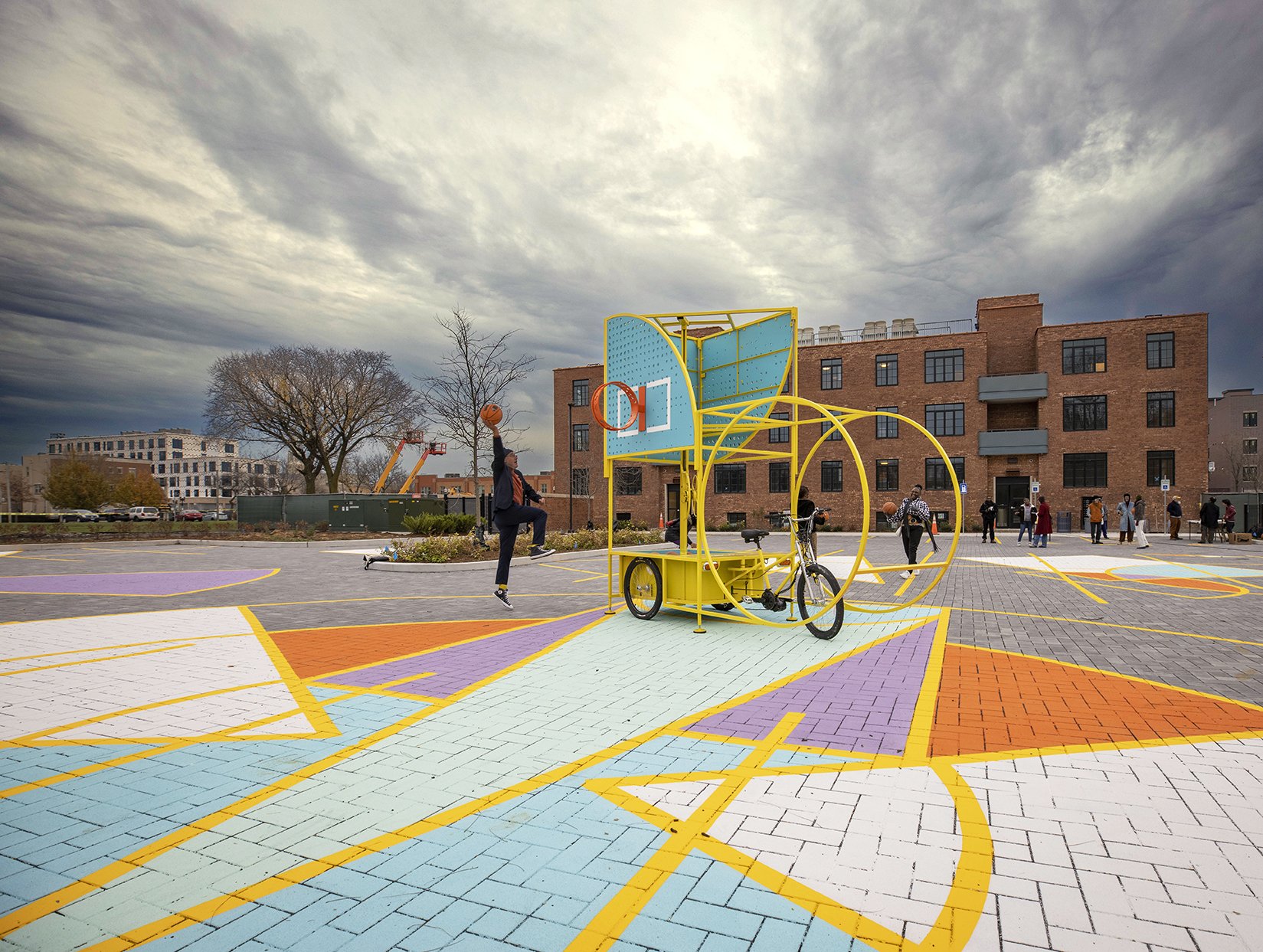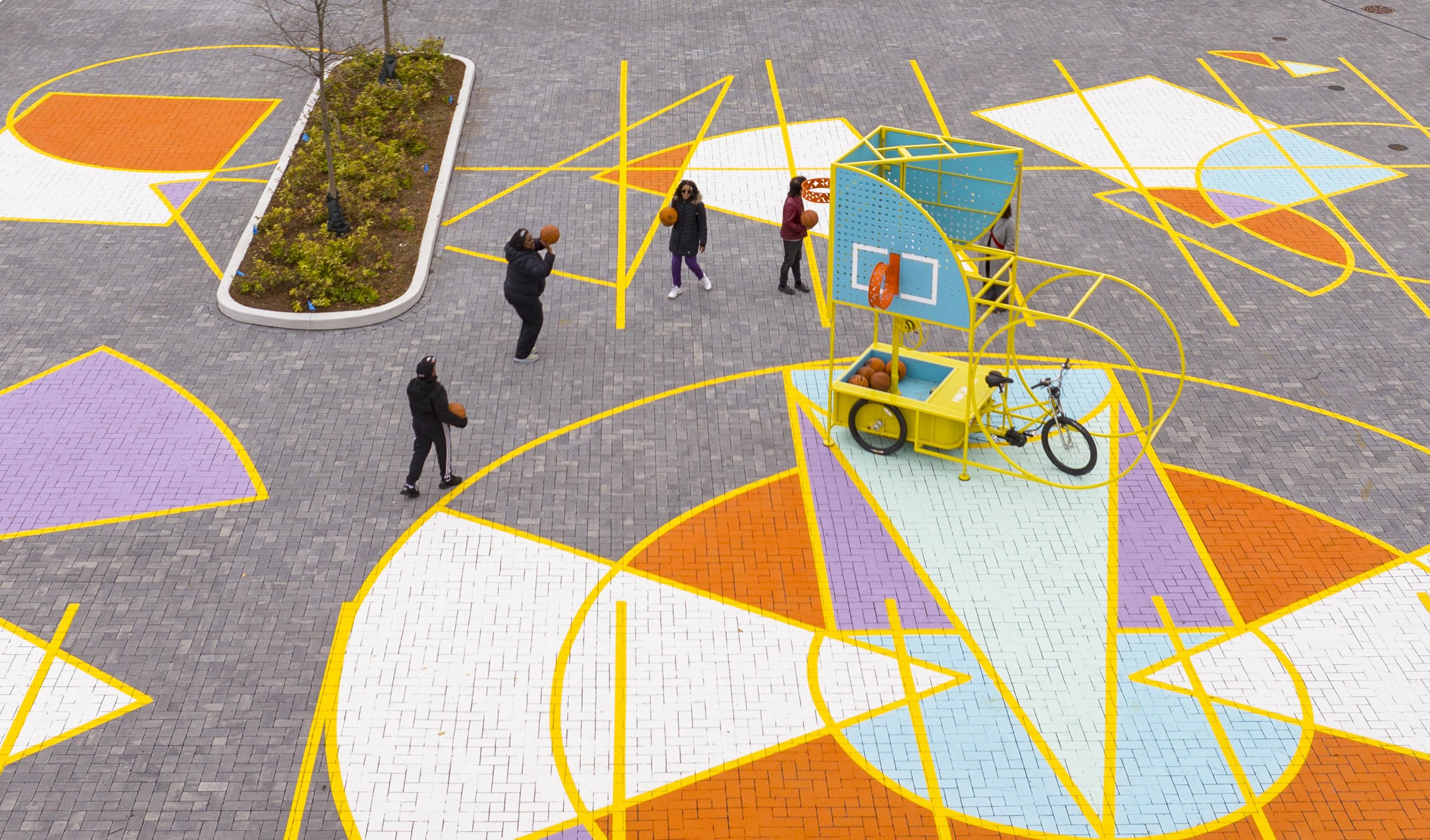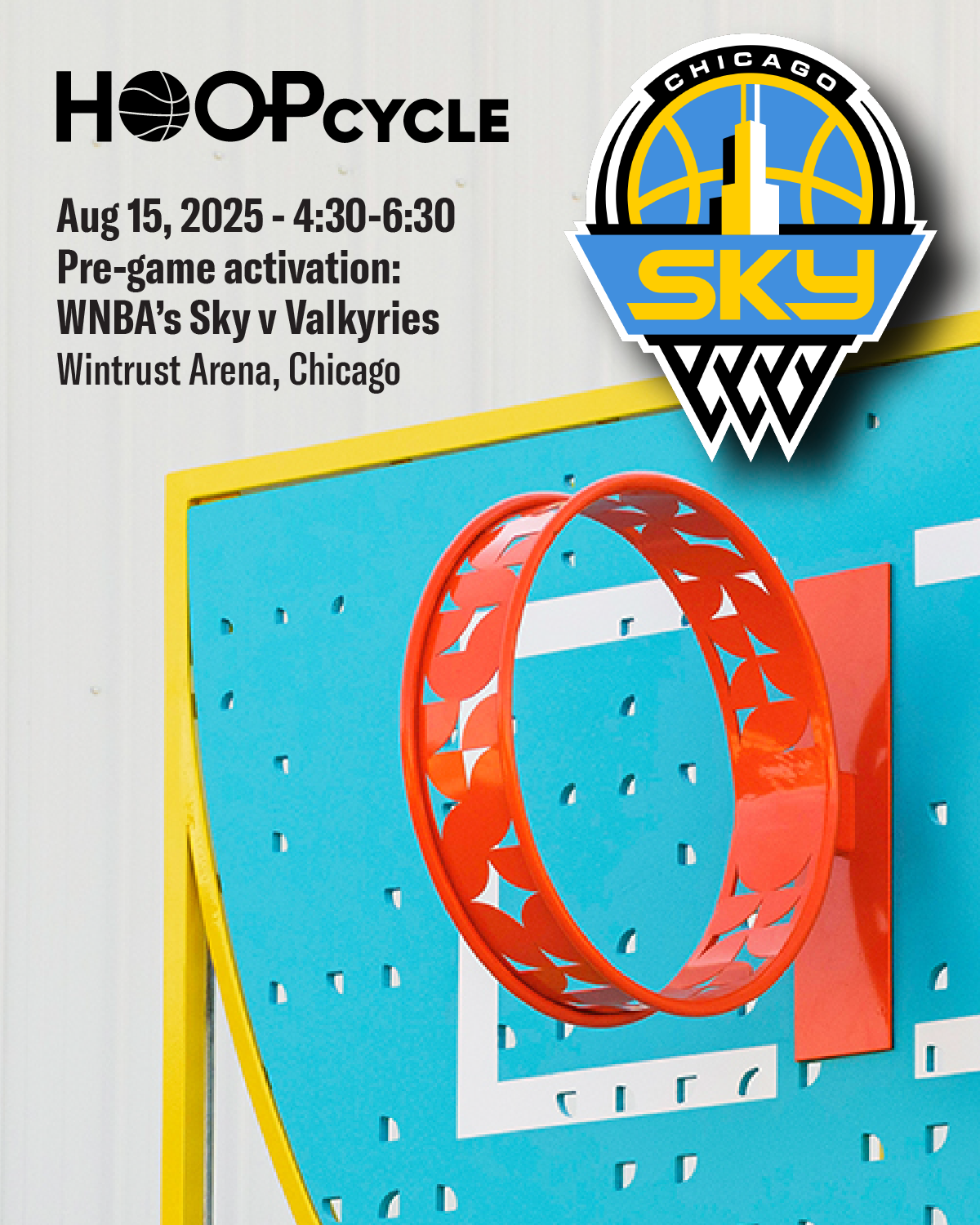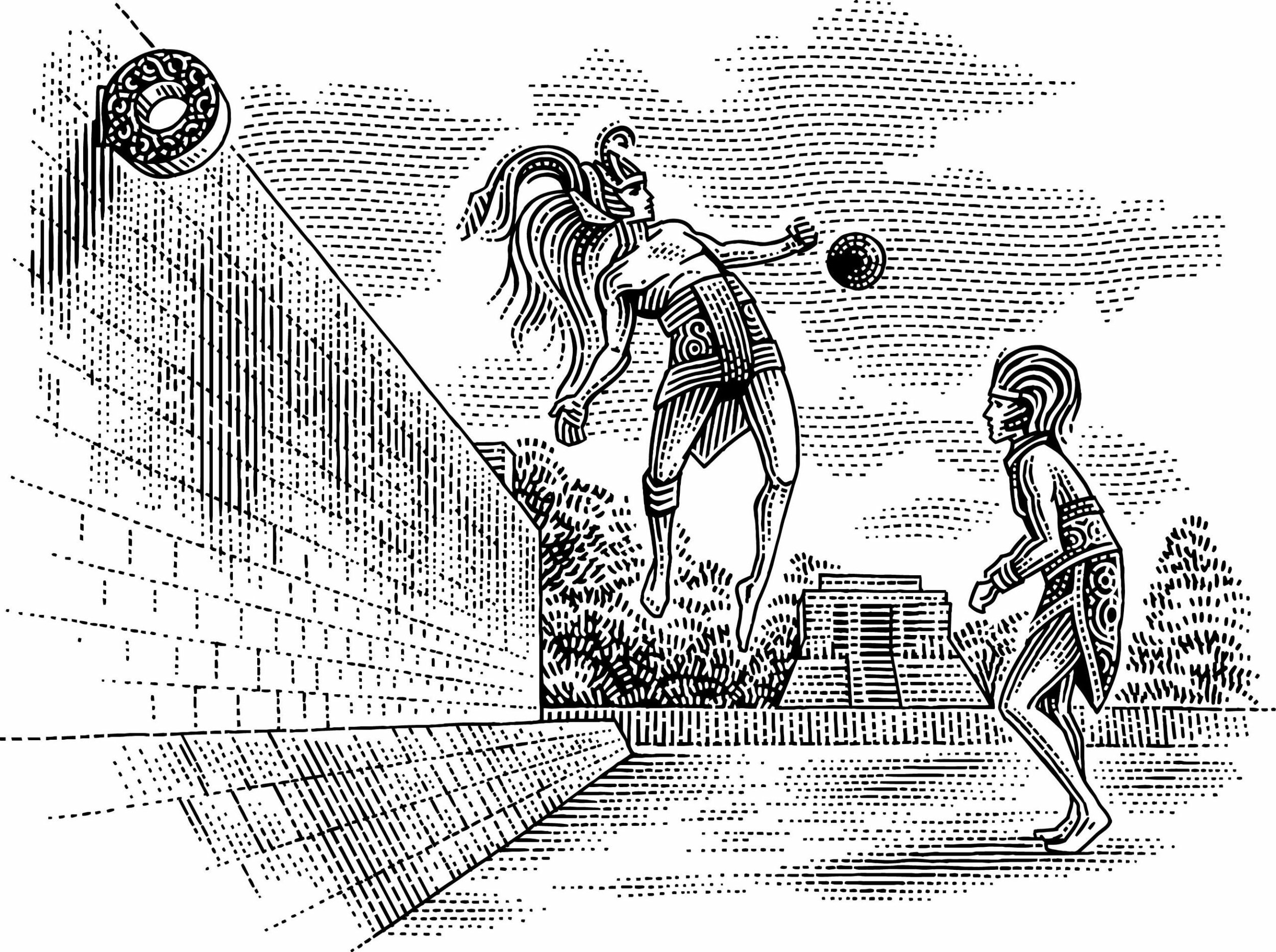
HOOPcycle is a mobile art installation that recenters basketball’s history and brings its Mesoamerican roots to the forefront.
Conceptualized by artist Marisa Morán Jahn and architect Rafi Segal, this vibrant, mobile basketball court explores the intersections of recreational equity, cultural heritage, and public space.
Drawing inspiration from both contemporary basketball and its ancient pre-Columbian ancestor, HOOPcycle combines a reinterpreted vertical hoop with a tricycle-mounted design, offering a reimagined sports experience that challenges norms and unites communities through play.
Events
Aug 23-24, 2025: The HOOPcycle makes a special guest appearance at Bulls Fest, the annual festival hosted by the NBA's Chicago Bulls at United Center campus. Bulls Fest is Chicago’s ultimate basketball experience featuring a 3v3 tournament and other basketball activations, appearances from Bulls players and legends, local food and artists and an exclusive merchandise collection.
Aug 15, 2025: The HOOPcycle and Angel Reese’s Reebok Airstream team up at Wintrust Arena for WNBA’s game between Chicago Sky v. Golden Gate Valkyries!
May 10, 2025: The HOOPcycle toodled over to the Museum of Contemporary Art Chicago for a day of play.
July 27, 2025: Play sesh with North Lawndale Pop Up
The HOOPcycle is regularly on view in the parking lot shared by The National Public Housing Museum and a new mixed-income housing development in Chicago’s Near West Side at 919 South Ada St, Chicago, IL!


Marking its home at National Public Housing Museum is OOPS, a geometric ground mural that celebrates street games and their role in bringing people together to play.
In OOPS, colorful shapes are outlined in yellow traffic paint, the same paint that regulates how people move in the streets and parking lots. In OOPS, the linework transforms the parking lot into a space of play.
The ball court at Chichen Itza, Yucatán, Mexico. Players gained points not by bouncing the ball but by using their knees, hips, and elbows to knock a hard rubber ball weighing 13 pounds into the vertical rim.
Bball’s Evolving Design
The game was referred to as Pok-A-Tok, Ulama, or simply the Ball Game.
The first women’s basket ball teams emerged within 2 years after basketball was reinvented in the United States in 1891. In Chicago, women at the Jane Addams Hull House were encouraged to participate in recreational sports and formed one of the nation’s first competitive teams, sharing facilities alongside 3 Hull-House men’s teams. Sewn from leather with uneven seams, the balls were not bounced but instead were passed into a hoop.
HOOPcycle’s design reinterprets the Meso-American tradition of papel picado (“perforated paper”) in which the holes — like portals —are said to let the past come through. Aside from the functional aspect of the holes (to let wind pass through and reduce weight), the ornamentation celebrates the game as an important form of cultural expression.
Whether a block party, neighborhood event, or sports tournament, HOOPcycle rides into your street and immediately transforms it into a space of play and gathering.
Origin of the HOOPcycle
“HOOPcycle invites people to interact, make up their own rules, and embrace a broad notion of play and belonging,” says Marisa Morán Jahn, a 2022-23 NPHM Artist Instigator and Senior Researcher at MIT. “My memories of living in public housing as an adult are , Growing up in public housing, my memories areare filled with the laughter and joy of communal play—something I hope HOOPcycle helps communities recapture, free from stereotypes and exclusion.”
Marisa Morán Jahn and Rafi Segal are an artist-architect duo whose public art and civic structures engage people in tackling complex issues on a community scale.
-
Marisa Morán Jahn is an artist of Ecuadorian/Chinese descent whose work “exemplifies the possibilities of art as social practice” (ArtForum) and explores “civic spaces and the radical art of play” (Chicago Tribune). Working across drawing, public art, and architectural-urban scales, Jahn directly engages new immigrant families and low-wage workers — and millions more via Tribeca Film Festival, United Nations, Obama’s White House, The New Museum, Brooklyn Museum, the Guggenheim Museum, and international media (The New York Times, Wall Street Journal, Univision Global, BBC, CNN). Jahn is a Senior Researcher at MIT (her alma mater); Director of Integrated Design at Parsons/The New School. marisajahn.com | @marisa_jahn
Rafi Segal, architect and MIT professor, sees HOOPcycle as a way to rekindle urban street culture and civic engagement. “Suburbanization and disinvestment have fragmented our cities, contributing to a crisis of loneliness and loss of public gathering spaces,” says Segal. “By bringing play back to urban streets, HOOPcycle reclaims these spaces for connection and resilience.”
-
Rafi Segal is an architect and Associate Professor of Architecture and Urbanism at MIT. His work involves design and research on the architectural, urban and regional scale, currently focused on how emerging notions of collectivity can impact the design of buildings and cities. His current ongoing work includes designs for new communal neighborhoods in Israel, Boston, Rwanda, and the Philippines. Segal directs Future Urban Collectives, a new design-research lab at MIT that explores the relation between digital platforms and physical communities asking how architecture and urbanism can support and scale cohabitation, coproduction, and coexistence. Segal has exhibited his work at venues including Storefront for Art and Architecture; KunstWerk, Berlin; Witte de With, Rotterdam; Venice Biennale of Architecture; Museum of Modern Art; and the Hong Kong/Shenzhen Urbanism Biennale. He holds a PhD from Princeton University and a M.Sc and B.Arch from Technion, Israel Institute of Technology.
The National Public Housing Museum is built on the former site of the Jane Addams Homes, Chicago’s first federal housing project. It is the first museum in the United States dedicated to telling the stories and sharing the history of public housing in this country.
The HOOPcycle is made possible through support from the Joyce Foundation, the National Endowment for the Arts, Chicago Association of Realtors, and The Faculty Fund at Parsons/The New School.
Team:
Media + Communications: Ximena N. Beltran Quan Kiu
Fabrication: Art Domantay, Big Deal Cases
Design Assistance: Ous Abou Ras
Studio Assistance: Zevin Acuña, Em Flaire



















